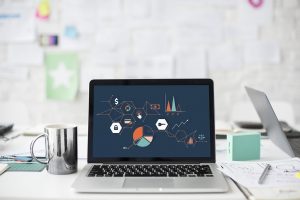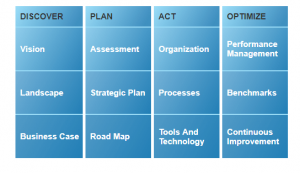It’s possible to create a completely new experience by taking a fresh look at the supply chain at the physical, virtual and organizational level.
Toilet paper.
We never thought about it before. You went to the store, you got it. If you wanted, you could buy it in bulk on the internet or even subscribe to get regular shipments.
Now, during the coronavirus outbreak, toilet paper can’t be found. There was no contingency in the supply chain for a rush on toilet paper. Especially a nonsensical upsurge that has left aisles bare, grocery stores enforcing a two-roll maximum per family, and rogue toilet paper merchants selling rolls for $60 a pop.
The coronavirus is many things, but a cause for more toilet paper it is not one of them. Unlike hand sanitizer and masks, for example, people who started hoarding the rolls will likely still have them long after the aisles are stocked again. That’s going to trigger another supply chain shock.
A supply chain is like the individual parts of a car. When they’re working together, you don’t notice them. You don’t think about them. And you probably don’t know how they work.
But when they break down, things can get weird. And, suddenly, there’s no more toilet paper.
From same-day to month-delay
The sudden panic, the lockdown, and the ensuing social distancing economy, has been a boon and a burden for companies like Amazon. In an effort to sell essential items first, Amazon Prime customers are now experiencing month-long delays for items that used to take just a few days. That’s a far cry from the drone deliveries that were supposed to predict your purchases and get them to your door before you even knew you needed them.
Because who could predict this?
Well, quite a few people. The supply chain market is valued at about $1 trillion. As we analyze the business impact of coronavirus, the supply chain is going to be front and center like never before. That’s why it’s important to think about where the market is now – and where it’s going.
CB Insights provides one of the most complete breakdowns of the supply chain tech industry, with eight different categories:
- E-commerce Logistics
- Sensors
- Assets Tagging
- Freight & Supply Chain Visibility
- Last-Mile Delivery
- Inventory Management
- Trucking
- Warehousing
The “Last Mile Delivery” category highlights how you can take supply chain all the way from warehousing and global shipping down to the delivery guy who shows up with your hamburger. Altogether, we see eight categories that span the ecosystem, with dozens of companies working toward solutions.
To truly appreciate the impact of the supply chain in our daily lives, we should reexamine the meaning of “supply chain” itself.
If the supply chain is a delivery of a good or service from Point A to Point B, we can break it into three categories: the physical supply chain, the virtual supply chain, and the organizational supply chain.
All of them need improvement – and recent developments have highlighted that like never before.
1. The physical supply chain
The tech supply chain is exposed, too. From Australia to Chile, lithium, the raw material for batteries, can’t get shipped to the manufacturers. “It’s not the orders and it’s not the production, it’s (about) can we get it shipped?” one mining CEO told The Verge. “Can we get the vessels? Can we get the containers?”
The physical supply chain is made up of material products that need to get shipped from place to place in order to be processed, manufactured, distributed or consumed – from DoorDash to fleet management software for truck dispatchers.
Suppliers and distributors and end-customers all want to know the same thing: when they’re getting their stuff. That’s the kind of data that can help solve things like the toilet paper crisis in the future, especially as machine learning starts to process and predict events like demand swings and global supply trends.
A physical supply chain that’s fully optimized could have significant implications for everything from product pricing and shipping costs to safer driving practices and more efficient fuel use.
This often comes down to innovations in the industrial internet of things (IoT). The industrial internet of things is essentially a complicated opera of hardware, software, and sensors all working in harmony.
Samsara, founded in 2015, is a great example of what supply chain tech is working to accomplish. Valued at $530 million, the San Francisco-based company has 10,000 customers and offers software and hardware solutions to provide more visibility into what’s happening at every stage of the supply chain.
A recent blog post about Samsara’s technology during the COVID-19 outbreak breaks down how the tech can work at an individual level: fleet dispatchers have to work from home, but they can stay in contact with drivers with the software. If trucks get held up at a warehouse or receiving dock, Samsara shows what’s happening on the ground – allowing drivers and dispatchers to change their plans. Meanwhile, distributors and customers can track the shipments in real-time so they can know exactly when it’s getting to them.
These developments are all based on visibility into what can be a very opaque process. The more visibility in a supply chain, the better it can become streamlined and communicated to everyone who’s affected. And, as we’re learning, a stable supply chain is fundamental to a functioning economy.
2. Virtual supply chain
Things are going wrong in the virtual supply chain, too. Across the US, unemployment websites are crashing due to an unprecedented surge in traffic and claims. The small business loans promised in the $2 trillion stimulus package aren’t going well, either – when the Small Business Administration launched the program in early April, there were technical problems that made it difficult to banks to actually authorize the loans.
Celonis, a German startup valued at more than $1 billion, is trying to streamlined complex processes like this with what the company calls “process mining.”
Process mining aims to visualize every step in the actual process and then applying AI to data insights to continually optimize processes – from how employees use software and systems to how customers interact with different touchpoints.
By visualizing the virtual supply chain – and having a solution that learns and improves each step – process mining can save money and time while breaking down silos and separate systems. This could identify bottlenecks in bureaucratic processes, from government departments to multinational companies.
The virtual supply chain has to simplify the tech stack itself and how systems communicate. Pretty important, considering the average enterprise is using more than 90 marketing cloud services.
3. Organizational supply chain
Finally, there’s the organizational supply chain. Bureaucracy.
Finance and healthcare organizations have been disproportionately impacted by the coronavirus outbreak. We know that. But the aftermath of insurance claims and medical records, paired with a flood of unemployment claims and loans, is going to create a mountain of paperwork and applications.
Process mining solutions could help here, too, by identifying the bottlenecks where dependencies have stopped people from getting what they need. But there’s also the more tangible problem of paperwork and processing.
Paper records, one day, will be obsolete. But there’s still a long way to go. And, during times of crisis – hurricanes, earthquakes, tornadoes, flooding, pandemics – there’s a lot of claims getting filed all at once. By analyzing the organizational supply chain, it’s possible to better connect different agencies and departments, streamlining the process and allowing for much better visibility without errors or redundancies in the paperwork itself.
Dude, where’s my check?
We’re seeing a supply shock across virtual and organizational supply chains right now: the individual stimulus check. On forums and social media, people ask who’s gotten them and who’s waiting on them. Everyone is looking at their bank accounts to see when the money gets added.
Just like toilet paper, logistics, software, and paperwork, the big problem for this supply chain issue is visibility. When people know when they’re going to get what they need – and companies can plan every step of the process with foresight aided by machine learning and transparency in each piece of the chain – it’s possible to create a completely new experience by revolutionizing supply chain visibility.
And by revolutionizing the supply chain, it might be possible to revolutionize the human experience – from Point A to B, and everything in-between.
Opinions expressed in this article are those of the guest author and not necessarily Marketing Land. Staff authors are listed here.
Marketing Land – Internet Marketing News, Strategies & Tips
(45)
Report Post







